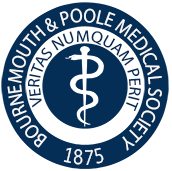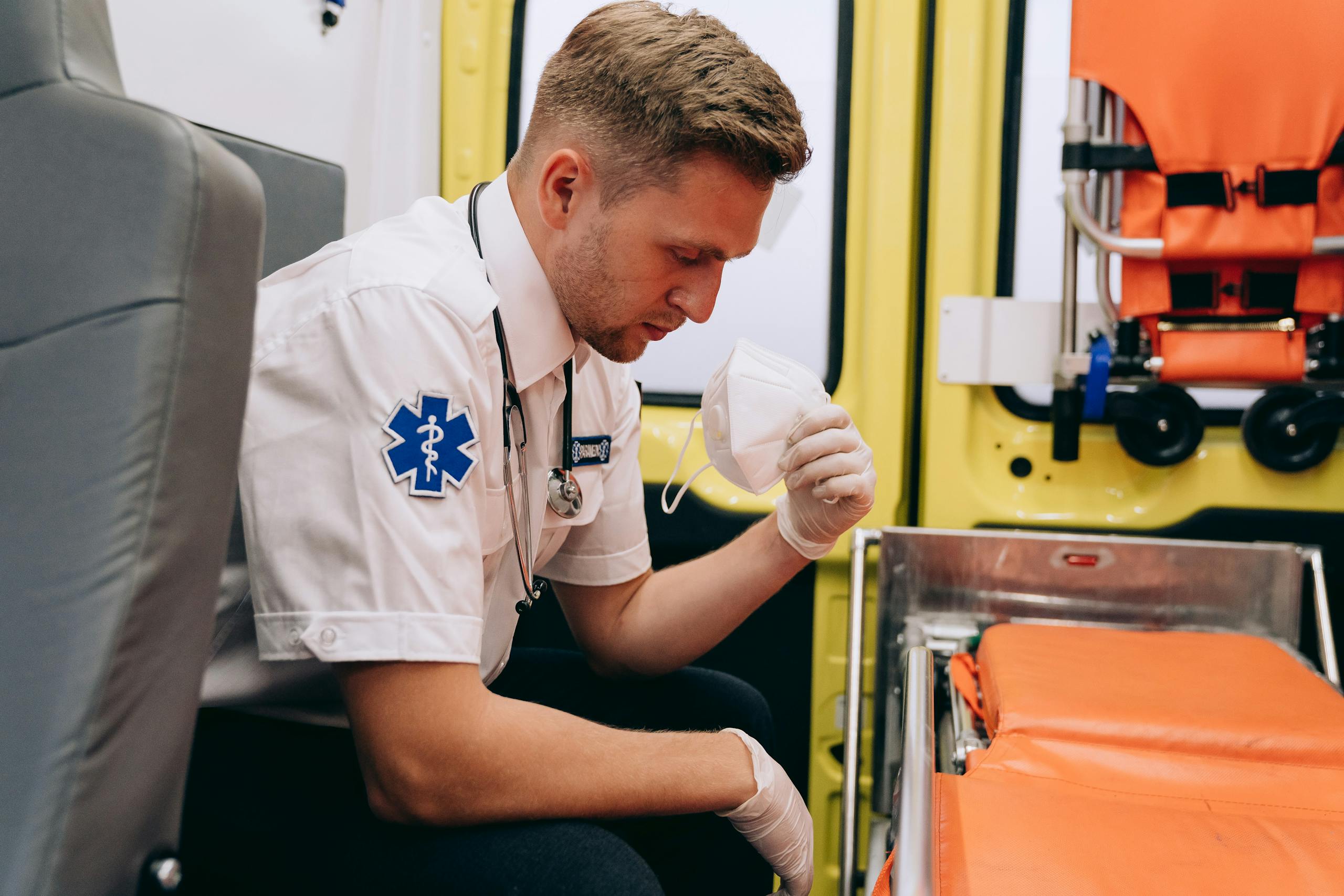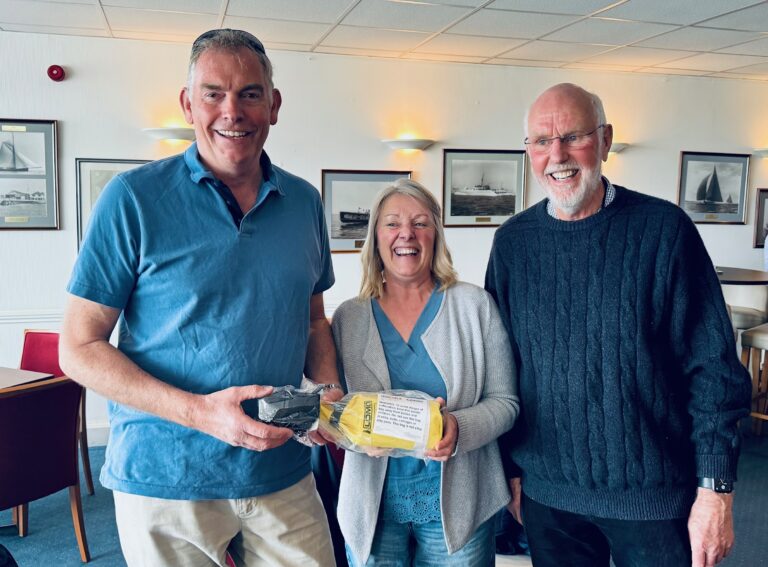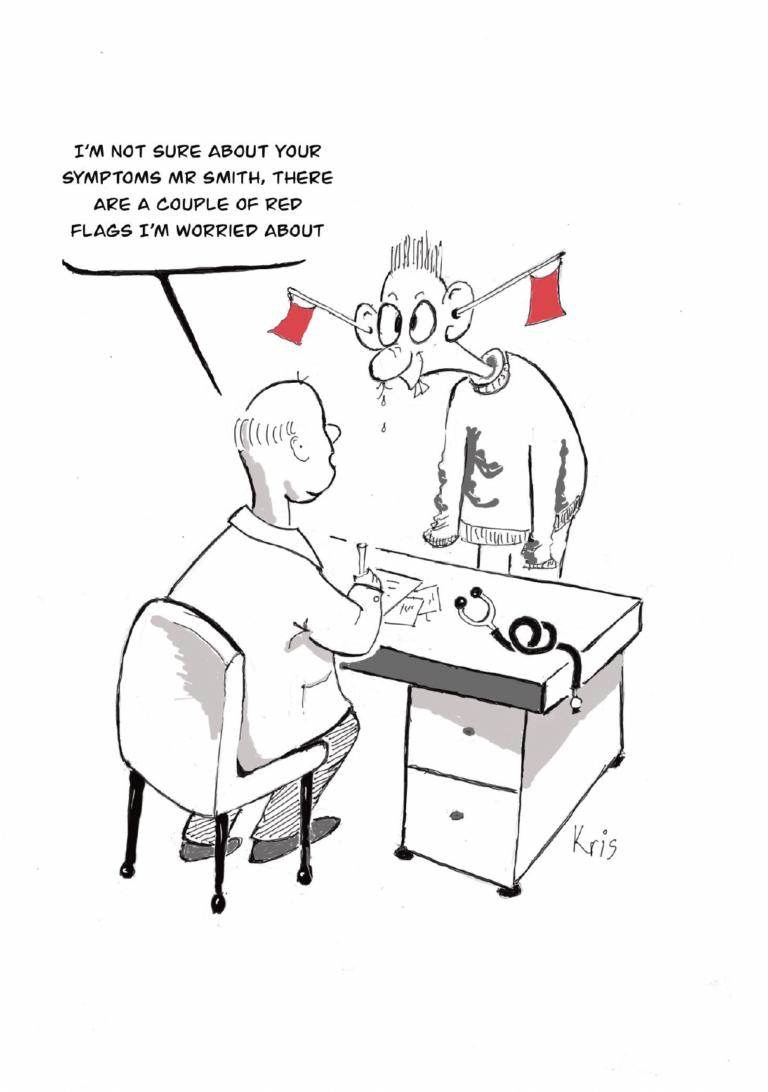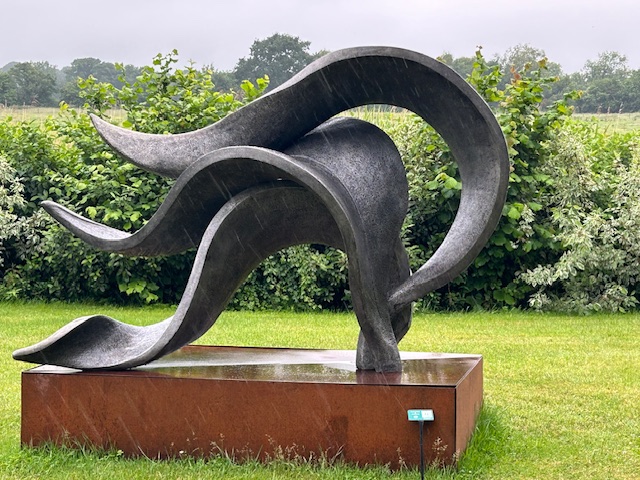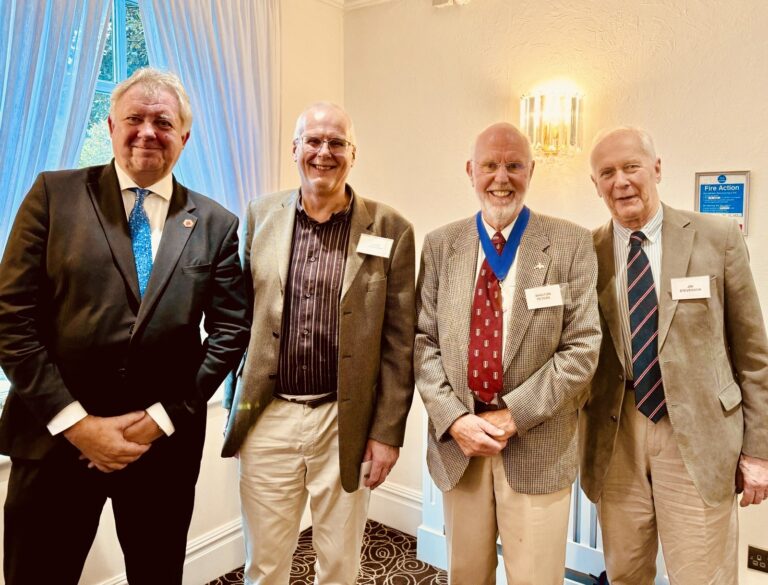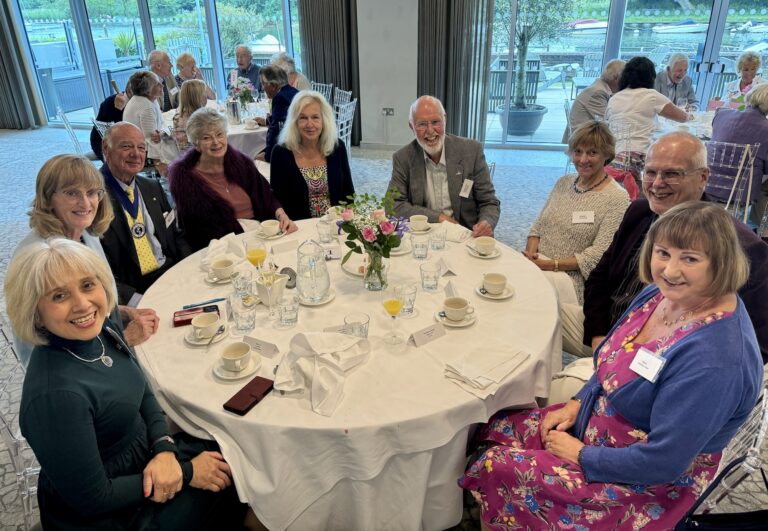THE DEVELOPMENT OF IMMEDIATE CARE SERVICES
IN THE UNITED KINGDOM
Dr J R Hoyle
Retired Consultant Anaesthetist, Bournemouth
In my career I have witnessed many remarkable developments in medicine and, of these, one which has especially interested me is the provision of skilled resuscitation in the field for the critically ill patient.
Whilst mouth-to-mouth resuscitation is mentioned in Genesis (chapter 2,
verse 7), it was not until the mid 18th century that Tossack and others, through the Proceedings of the Royal Humane Society, promoted its widespread use. Sadly, it did not find lasting favour.
When, in 1858, Silvester described his method of artificial respiration this, with modifications, remained textbook teaching for the next 100 years
The scene in 1958
When I qualified in 1958 effective resuscitation in hospital was unusual, never mind in the field.
There were no bleeps to summon a doctor quickly, flashing coloured lights in the corridors were the norm, and only anaesthetists had any real skill in resuscitation. To put up a drip one would use a metal Guest cannula or the giving set needle, a drip set made of red rubber and glass, and finally the rubber bung with its glass tube air inlet would be inserted into a glass bottle of saline.
Rapid transfusions could only be arranged by pressuring the air inlet with a Higginson’s syringe, more usually used for inflating air up a sigmoidoscope! Should the unfortunate patient require artificial ventilation, then the outcome was uncertain, since the ‘new mouth-to-mouth technique had not yet been adopted by everyone. If cardiac arrest supervened, the houseman might perform internal cardiac massage having opened the patient’s chest with a scalpel carried in the top pocket of his white coat! There was no crash trolley in 1958, so it would be unusual for sophisticated equipment, say for intubation, to be available on the ward.
It goes almost without saying that resuscitation being so haphazard in hospitals, there was no system of immediate care in the field, other than from an ambulanceman or occasionally a doctor, both of whom, apart from administering basic first aid, would bring the patient to hospital with all haste.
Advances in the 1960s
All this was soon to change. Medical research and wartime experience had led to a better understanding of the physiology of shock, and of the benefit to patients of early fluid replacement. From 1957 Professor Gogler’ of Heidelberg began treating autobahn casualties by means of a mobile resuscitation ambulance with its own medical team. The benefits of on-site resuscitation were dramatic.
The 1960s saw the arrival of motorways in the UK, and with them came the most serious road accidents this country had so far witnessed, commonly involving multiple pile-ups in fog. In 1967 Dr Easton, a GP in North Yorkshire, with a team of 34 volunteer doctors, began to work with ambulance crews to provide full resuscitation at the scene of major incidents of all kinds, day and night.
His example kindled enthusiasm in many general practices around the UK with the result that, during the 70s, GP flying squads multiplied and became a valuable adjunct to the immediate care service, working in liaison with ambulance crews.
A second type of immediate care service based at hospitals developed in the mid 60s. Hall’ in 1965 and Collins in 1966, published details of separate schemes in which a doctor/nurse team was carried by the ambulance service to the scene of an incident. In 1967 Dr Snook’ introduced an ‘Accident Flying Squad’ at Bath in which, using his own fully equipped car he himself attended the scene of major incidents to work with the ambulance service.
Advanced training for ambulance-men
The third system of immediate care centred around the advanced training of ambulancemen who, it was hoped, would then have the necessary skills to resuscitate patients without further assistance from doctors.
In the first two schemes there had been the question of whether
resuscitation given by a doctor in the field could be shown to be beneficial to the patient, whereas in the present scheme it was very much a question as to whether ambulance staff could be taught the skills and put them into practice in a way that would satisfy medical opinion. Three centres, one at Bristol led by Dr Baskett, the second at Brighton under Dr Chamberlain and the third here with the Bournemouth Ambulance Service all began tentatively around 1970. There were differences in the details of the training programmes at the three centres, and also in emphasis with regard to their ultimate aims.
Whilst the schemes at Bristol and Bournemouth were dedicated towards teaching the skill of resuscitation, including intravenous infusions, intubation and ventilation of patients, the Brighton scheme developed directly as an extension of coronary care in hospital. The Brighton crews were primarily given expert tuition in the recognition of arrhythmias and were able to give intravenous lignocaine or atropine and perform external DC defibrillation, if necessary. Pain relief was provided in all cases by Entonox. Each scheme developed slowly and independently of the others, pilot schemes preceding the final training schedules which, in each case, consisted of two phases, firstly a pre-hospital period of theoretical study, then a period of a month or more of whole time practical training in hospital, culminating in an official final assessment examination and the award of a certificate of competence.
Other developments contributed towards the expansion of immediate care schemes.
Firstly, there was the creation in 1963 of the Commission on Accident Prevention, the Rescue and Resuscitation Sub-Committee of which was later formed to foster and coordinate immediate care schemes. Chaired by Dr Bernard Lucas, an anaesthetist and engineer of great experience and vision in this field, this committee drew together many of those who were involved in immediate care, and became a regular forum for discussion of future policy. The Bournemouth Advanced Training Scheme in particular was instigated at the suggestion of Dr Lucas.
The immediate management of cardiac arrest had improved with the ABC of airway control, mouth-to-mouth respiration and external cardiac massage. This message was beginning to spread, and organisations such as the British Red Cross and St John’s Ambulance were instrumental in a doctor or paramedic.
Finally, in the field of equipment, plastics had arrived in the early 1960s heralding the cra of disposable pre-packed sterile equipment including cannulae, drip sets and endotracheal tubes.
Mechanical devices associated with resuscitation were improving, for instance, the Laerdal portable mechanical suction apparatus replaced foot operated equipment and miniature pneumatic ventilators had resolved a similar problem with continued artificial ventilation in the field. The electronics revolution was beginning with the introduction of reliable portable shock-proof equipment such as radio telephones and ECG oscilloscopes. The plasma substitute Dextran 70 supplemented simple electrolyte solutions. At first, both were presented in bottles which made rapid transfusions a problem. Later, drip sets with ball valves, soft packs of crystalloid solutions and Haemaccel, which were safe to pressurise, finally laid this problem to rest.
Expansion of the Advanced Training Schemes took place mainly in Wessex during this period, with anaesthetists undertaking the hospital training, whilst the pre-hospital phase of training became centralised, initially at the Ambulance Training headquarters at Bishop’s Waltham, then later at their new headquarters at Chippenham. Within a year or two, at the instigation of the Commission on Accident Prevention, a similar training programme was launched for the London Ambulance Service. Over the following years the scheme slowly expanded to other areas in the United Kingdom.
Unfortunately, no support was forthcoming from the government for many years despite a formal request from the British Medical Association in 1967. The Department of Health remained unconvinced of the benefits of advanced training for ambulancemen until 1978 following a crucial meeting at Harrogate where representatives of those involved with schemes were asked to defend their views. Finally the government acknowledged the Advanced Ambulance Training Scheme and in 1986, through the National Health Service Training Authority (later to become the National Health Service Training Directorate), a standard national training programme was adopted, which incorporated the best aspects of all three initial training schemes including that for specialised coronary care. The training manual contains protocols for the management of particular emergencies, and since 1990 has provided for the administration of a range of specified drugs. Steering committees composed of doctors and senior ambulance staff oversee all local service needs and are free to vary local policy as seen fit. In this way there is scope for progress as new equipment and treatments evolve.
BASICS
In concert with the improvements in the ambulance service the GP flying squad schemes increased by leaps and bounds to the extent that, by 1977, so many ‘daughter’ schemes had been set up that they become autonomous as the British Association for Immediate Care (BASICS).
BASICS has flourished over the intervening years and now has a membership of some 2,000 volunteer doctors in practices distributed countrywide, each available on a call-out basis to join ambulance crews and supplement the immediate care service. The scheme is fully recognised by the Royal College of Surgeons of Edinburgh, who have introduced an examination for the Diploma in Immediate Medical Care. Additionally, the following four organizations are affiliated to BASICS and contribute to the overall provision of immediate care:
- British Aeromedical Practitioners Association
- Medical Equestrian Association
- Royal National Lifeboat Institution
- British Association of Rally Drivers.
In 1990 Advanced-trained personnel were renamed ‘Paramedics’ and, at the same time, acquired their distinctive green uniforms. By this time it is interesting to note that there was a number of women Paramedics in the service. Since 1991, qualified Paramedics have doubled from 3,500 to 7,000 in 1995, and represent 42% of all ambulance staff. The 1990s saw the appearance of helicopters in various strategic locations, the first being one complete with medical team, which operates from the roof of the Royal London Hospital. Since then, others funded by public subscription have been located in Cornwall, Devon, Lincoln, Kent and Wiltshire. These now supplement the government-funded helicopter service in Scotland and the coastal air-sea rescue service.
As for the future, there are still parts of the UK that are inadequately covered by any of the immediate care schemes. The target of one paramedic per emergency ambulance has not been achieved nationwide and response times to major incidents fall substantially below target levels in some areas. The average doctor still lacks skill in resuscitation but this is being addressed by the expansion of Acute Trauma Life Support (ATLS) and Acute Cardiac Life Support (ACLS) courses.
In conclusion, I take this opportunity to thank those who have willingly given their time and expertise to help in the development of our local training scheme in Bournemouth during the past 25 years. I pay special tribute to the enthusiasm of the first ambulancemen who subjected themselves to a gruelling extra training programme for no financial or promotional reward. Finally, I thank my anaesthetist colleagues without whose help the scheme could never have started and would not have survived.
References
- Gogler E. Road Accidents. Documenta Geigy. Series Chirurgica, 1965.
- Easton KC. Blind oral intubation in the deeply unconscious patient Correspondence British Medical Journal 1968; 3: 252.
- Hall MH. The trapped motorist. Lancet 1965; 1: 904.
- Collins J. Organisation and function of an accident flying squad.British Medical Journal 1966; 2: 578.
- Snook R. Resuscitation at road accidents. British Medical Journal 1969; 4: 348.
- Chamberlain DA et al. Mobile coronary care provided by ambulance personnel. British Heart Journal 1973; 35: 550.
Reproduced with kind permission of the “Proceedings of Poole Anaesthetic Meeting Oct 1993)”
